Cihan Geyik
Go To Market
5
min read
Apr 25, 2025
Prospecting 101: Essential Techniques for Building a Robust Sales Pipeline
Building a robust sales pipeline isn't just a strategic advantage; it's the lifeblood of sustainable revenue growth. Many businesses struggle to hit their targets not because of flawed products or unfavorable market conditions, but due to an inconsistent or poorly managed flow of new opportunities. At the very start of this critical process lies prospecting: the systematic identification and initial engagement of potential customers.
Effective prospecting continuously feeds your sales pipeline, ensuring you have a healthy pool of leads moving towards conversion. However, it's far more than simply collecting names and contact details. It requires a strategic mindset, proven techniques, and the ability to navigate common hurdles like rejection fatigue or lack of confidence.
This guide dives into the essential techniques needed to build a strong, consistent prospecting engine. We'll cover how to precisely identify your ideal targets, employ effective outreach strategies, and leverage modern tools to work smarter, not just harder. Let's lay the foundation for a pipeline that drives predictable success.
1. Defining Your Ideal Customer Profile (ICP): Your Prospecting North Star
Before initiating any outreach, you must have absolute clarity on who you are trying to reach. Prospecting without a well-defined Ideal Customer Profile (ICP) is like sailing without a compass – you'll expend significant effort with little direction and likely miss your destination. Your ICP acts as a filter, ensuring your efforts are focused on accounts and individuals most likely to benefit from your solution and become valuable long-term customers.
Developing a strong ICP involves analyzing data and insights about your best existing customers and the market landscape. Key components include:
Firmographics: What are the characteristics of the ideal company? Consider industry verticals, company size (revenue, employee count), geographic location, funding status, and growth trends.
Demographics (of Key Roles): Who are the key people within those companies involved in the decision-making process? Identify relevant job titles, seniority levels, functions (e.g., Marketing, IT, Operations), and responsibilities.
Pain Points & Goals: What specific business challenges, unmet needs, or strategic objectives does your solution address for these companies and roles? Understanding their "pain" is crucial for relevant messaging.
Technographics: What existing technologies do they use (e.g., CRM, marketing automation, specific industry software)? This can reveal integration opportunities, competitive displacement potential, or technological sophistication levels.
Buying Signals: What activities or events might indicate a company is actively looking for a solution like yours? (e.g., hiring for specific roles, recent funding rounds, competitor mentions, website technology changes).
Gathering this information involves analyzing your CRM data, interviewing your sales and customer success teams, studying your best customers, and utilizing market intelligence resources. Modern sales intelligence platforms can significantly aid this process by providing access to vast company and contact databases filterable by these criteria, saving valuable research time.
2. Essential Prospecting Techniques: Finding and Engaging Your Targets
With a clear ICP, you can now focus on how to effectively find and engage these prospects. A multi-pronged approach combining research, personalized outreach, and technology is typically most effective.
Deep Research and Identification: Generic, one-size-fits-all outreach rarely cuts through the noise. Before contacting a prospect, invest time in understanding their specific context.
Review their company website (news, blogs, case studies, 'About Us' page).
Examine their LinkedIn profile (recent posts, shared content, connections, job history).
Look for recent company announcements (funding, product launches, partnerships, executive hires).
Check industry news and publications for mentions.
This research provides valuable "hooks" for personalization, demonstrating you've done your homework and aren't just sending mass emails. Sales intelligence tools can automate parts of this, enriching contact lists with relevant data points, news alerts, and technology usage information.
Strategic Outreach Methods: Choose channels based on your ICP's preferences and your research findings.
Personalized Email: Still a cornerstone of B2B prospecting when executed well. Reference your research, focus on a specific pain point or goal relevant to the prospect, clearly articulate the potential value you offer (without being overly salesy), and end with a clear, low-friction call-to-action (e.g., asking for a brief exploratory call, sharing a relevant resource).
Targeted Calling: Requires preparation and confidence. Develop a concise opening statement focused on value, anticipate likely objections, and have a clear objective for the call (e.g., qualifying interest, scheduling a discovery meeting). Focus on asking insightful questions rather than delivering a monologue.
Social Selling (Especially LinkedIn): Engage authentically with prospects' content (likes, thoughtful comments), share valuable industry insights to build credibility, participate in relevant LinkedIn Groups, and send personalized connection requests that explain why you want to connect. Tools like LinkedIn Sales Navigator are invaluable here.
Networking: Build genuine relationships at industry events (both virtual and in-person), webinars, and through professional organizations. Focus on mutual value exchange, not immediate pitching.
Leveraging Technology and Automation: Manually executing all prospecting tasks at scale is inefficient and prone to inconsistency. Technology plays a crucial role in streamlining workflows and enhancing effectiveness.
Sales Engagement Platforms (SEPs): Tools like Outreach, Salesloft, or HubSpot Sales Hub allow you to build multi-touch sequences combining email, calls, and social tasks, ensuring consistent follow-up and tracking engagement.
CRM Integration: Ensure your prospecting tools integrate seamlessly with your CRM (like Salesforce, HubSpot CRM, etc.) to maintain data hygiene, track activities, and manage the lead lifecycle effectively.
AI-Powered Prospecting Tools: Emerging platforms like Empler AI increasingly use AI for tasks like identifying high-intent prospects based on buying signals, automating data enrichment, generating personalized message drafts based on research, and even managing complex prospecting workflows. Some platforms utilize an "agentic" model where specialized AI agents handle discrete tasks like research, filtering, and drafting, aiming to further automate the process and free up sales reps for strategic engagement.
3. Overcoming Common Prospecting Hurdles: Mindset Matters
Prospecting success isn't solely about technique; your mindset plays a critical role. Several mental traps can derail even the best strategies:
Fear of Rejection / Scarcity Mindset: Prospecting involves hearing "no" or getting no response frequently. It's easy to get discouraged. Reframe rejection as data – it helps refine your ICP or messaging. Remember that prospecting is partly a numbers game requiring consistent effort. Automation can help maintain activity levels even during motivational dips.
Lack of Confidence / Imposter Syndrome: Feeling intimidated by senior titles or doubting the value you bring is common. Combat this by grounding yourself in your ICP research and understanding the genuine problems you solve. Thorough preparation builds confidence and helps establish peer-level conversations. Focus on curiosity and helping, not just selling.
Ego Interference: This can manifest as talking too much instead of listening, or being overly defensive about objections. Effective prospecting requires humility and active listening. Ask insightful questions to uncover needs before presenting solutions. View objections as opportunities to understand concerns better.
4. Connecting Prospecting to the Wider Sales Pipeline
Prospecting is the critical first stage (Top of Funnel) that feeds your entire B2B sales pipeline. The qualified leads generated through prospecting move into subsequent stages, such as:
Lead Qualification: Assessing if the prospect meets predefined criteria (e.g., using frameworks like BANT - Budget, Authority, Need, Timeline, or MEDDIC).
Discovery Call / Needs Analysis: Deeper exploration of the prospect's challenges and goals.
Solution Presentation / Demo: Showcasing how your product/service addresses their specific needs.
Proposal / Negotiation: Outlining terms and pricing.
Closing: Securing the deal.
Consistent, high-quality prospecting ensures a steady flow of opportunities entering this pipeline, which directly leads to:
More Accurate Sales Forecasting: Predictable input makes output easier to estimate.
Better Resource Allocation: Allows sales teams to prioritize qualified leads effectively.
Increased Sales Velocity: Prevents pipeline "droughts" that stall momentum.
Conclusion
Mastering prospecting is fundamental to building a predictable and scalable revenue engine. It requires a disciplined approach centered on a clearly defined ICP, the strategic application of research-driven outreach techniques, and the resilience to overcome inevitable challenges. In today's environment, intelligently leveraging technology – from CRMs and SEPs to advanced AI-driven platforms – is no longer optional but essential for efficiency and scale.
By committing to these principles – understanding your target audience deeply, engaging them thoughtfully, maintaining a positive and persistent mindset, and utilizing the right tools – you can transform prospecting from a daunting task into a powerful engine that consistently fills your sales pipeline with high-quality opportunities, paving the way for sustained business growth.
Sources
Forrester. (Date relevant report published, e.g., 2023). [Title of relevant Forrester report on B2B Sales or Sales Technology]. (Access typically requires a subscription)
Gartner. (Date relevant report published, e.g., 2023). [Title of relevant Gartner report on Sales Pipeline Management or CRM]. (Access typically requires a subscription)
HubSpot Blog. (Various dates). [Articles related to Sales Pipeline Management, Prospecting Techniques, ICP Development]. Retrieved from https://blog.hubspot.com/sales
Sales Hacker. (Various dates). [Articles related to B2B Prospecting Strategies, Sales Technology, Mindset]. Retrieved from
Mastering Prospecting (Empler AI Blog for Agentic AI & Go-to-Market) https://www.empler.ai/blog/mastering-prospecting-strategies-to-identify-and-connect-with-ideal-clients







